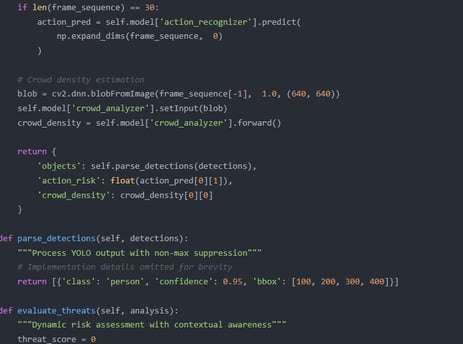Model Optimization Services
Enhancing video analysis through fine-tuning vision-language models for improved accuracy and efficiency.
Fine-Tuning Models


Optimize models for better performance and accuracy in video behavior detection tasks.




Cross-Modal Alignment
Achieve superior alignment between video frames and text for enhanced interpretability and insights.
User surveys assess public acceptance of privacy protection in model decision-making processes.
Ethical Validation


Intelligent Surveillance: Model Optimization Techniques for AI-Driven Real-Time Analysis and Suspicious Activity Detection
Intelligent surveillance systems leverage AI to analyze live video feeds, employing advanced model optimization techniques to enhance performance. Key approaches include:
Lightweight Model Design: Techniques like knowledge distillation and model pruning reduce computational demands while maintaining accuracy, enabling deployment on edge devices (e.g., MobileNet variants for low-latency inference).
Multimodal Fusion: Integrating visual data with contextual metadata (e.g., audio, timestamps) via cross-modal attention mechanisms (e.g., CLIP-based architectures) improves scene understanding, distinguishing threats like violence from benign activities.
Temporal Optimization: Frame-sampling strategies and asynchronous processing pipelines prioritize critical frames, balancing latency and accuracy. Techniques like 3D convolutional networks or Transformer-based temporal modeling capture motion patterns.
False-Positive Mitigation: Spatiotemporal context analysis (e.g., tracking object trajectories) and semi-supervised learning refine anomaly detection, filtering transient noise (e.g., shadows) while identifying sustained suspicious behaviors.
Privacy-Preserving AI: On-device processing with federated learning and dynamic blurring of non-relevant areas ensures GDPR compliance without compromising detection efficacy.
These optimizations enable scalable, ethical, and real-time surveillance solutions, addressing societal needs for security and privacy.